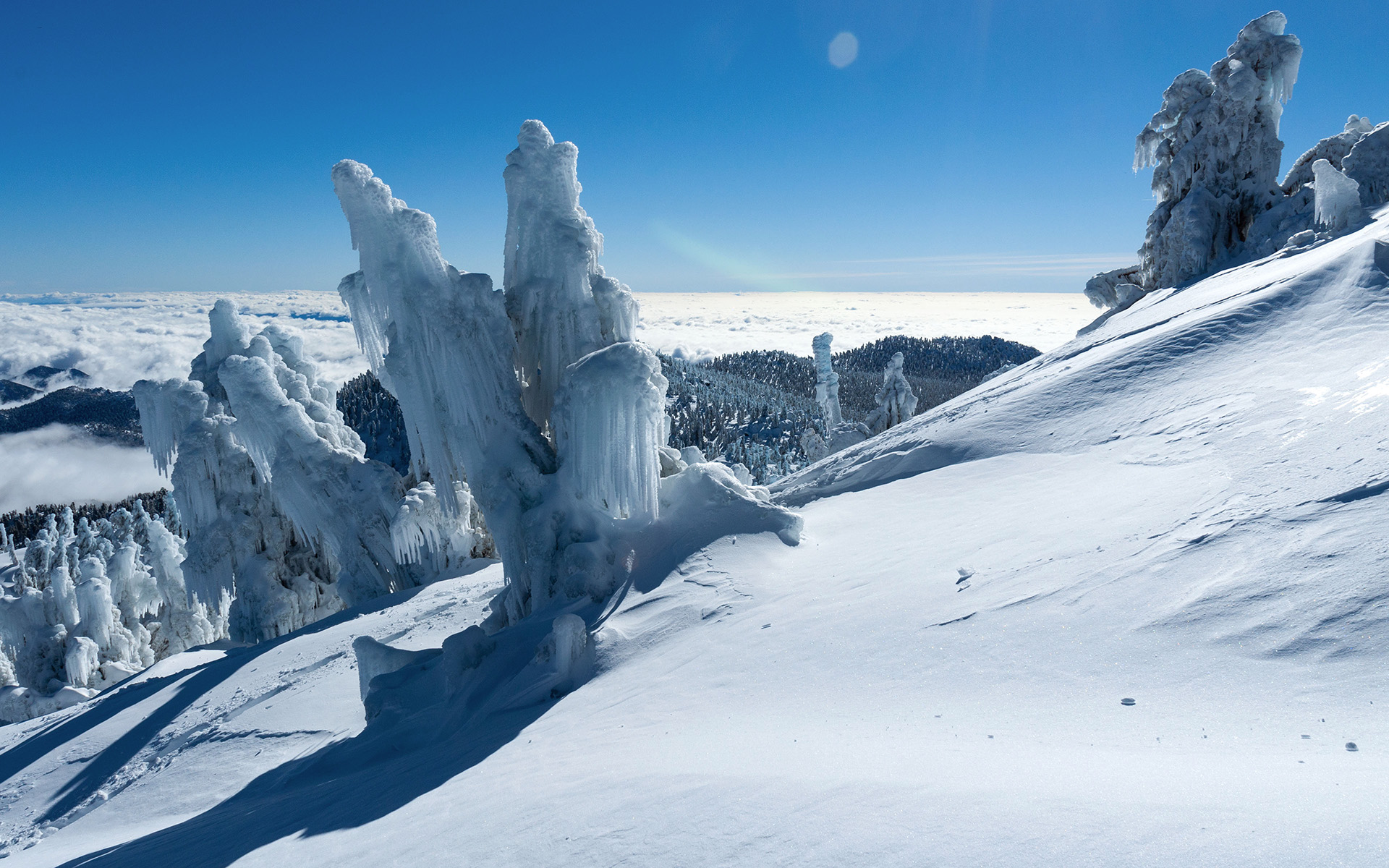Everything Under the Sun

I worry a lot about ice. For skiers, ice takes a game of skill and perverts it into a game of chance. Whether you are hiker, skier, or just casual visitor to Southern California's mountains, ice (or snow that acts like ice) is one of our biggest killers.
This is a grab-bag post—a catalog of dangers—and while I will list the usual suspects plus a few SoCal-specific backcountry hazards, the headline is the important part: we have unique and dynamic mountains in which a lot of strange stuff happens.
Ice
We are close to the ocean and quite far south, and those two factors dominate our mountain environments. Moisture from the Pacific creates and saturates our snowpacks, alternating with cold desert air to create rock-hard conditions.
Never traverse onto a slope in Southern California unless you know in advance that you can set an edge. Overt and covert ice can be found throughout our mountains on virtually all aspects all winter long.
Special mention must be given to the use of microspikes. If you're a hard-booted skier, use a good aluminum crampon like CAMP USA's XLC-390. If you're a hiker, the temptation to put microspikes on your sneakers will be great. Don't. In any exposed context, use real crampons with a mountaineering boot.
Ice in the SoCal mountains creates not only slide-for-life conditions, but also deadly shooting galleries in which big chunks of rime fall from trees and then bomb downhill. On days like these, the mountain is telling you to go home.
Avalanches: Wait 48 hours
Dare I say it? The deadly slab avalanches of continental and intermountain snowpacks are much less likely to trouble you in Southern California—provided you exercise some patience. Wet-snow avalanches are another story.
Avalanche danger in the big SoCal ranges (San Gabriels, San Bernardinos, & San Jacintos) spikes rapidly during storms and dissipates rapidly afterward. Assuming temperatures aren't bitter cold, waiting 48 hours after storms is a reliable way to shift the odds in your favor.
That said, if it's early in the season, I'd eye any 37° north/northeast aspect with suspicion regardless of how long it's been since the last storm.
On sun-exposed aspects, expect wet slides to be possible whenever the sun is shining. As the palm trees suggest, you will encounter t-shirt weather throughout the year in our mountains, and that can rapidly destabilize the snowpack.
Note that for current conditions and detailed snowpack discussions, SoCal skiers have two excellent resources: the Southern California Avalanche Center (local mountains), and the Eastern Sierra Avalanche Center (Mammoth).
Pacific Storms
Newcomers to California are often bemused by the apparent freakout that comes with the arrival of winter rain. Those Pacific Storms, however, can be fierce, making freeways treacherous and creating fast water and flood hazard throughout the state.
It's often simply impossible to get up to the mountains during these storms, so staying home is a perfectly reasonable option.
If you do decide to head into the teeth of a storm, the drive alone is probably going to be an adventure, and there is a high likelihood you'll get soaked through well before you encounter shrieking wind and freezing temperatures (not an ideal combination).
If you must go, ski inbounds at one of the local resorts. Or go to Mammoth. In time, you'll develop a feel for what our storms are capable of—and you'll probably decide to stay home.
They're Not Real Mountains
Discovering there are, in fact, mountains bordering Los Angeles came as a shock to me when I first moved here, and even so, I initially viewed them with a certain measure of disdain.
Perhaps it is simply the sheer incongruity that makes it so easy to underestimate the terrain.
The smallest of our three major ranges, the San Gabriels, pop up an airy 10,000 vertical feet above the Los Angeles basin. Put 23 million people in close proximity to that kind of topography, and you get one of North America's most deadly mountains—good old Mount Baldy.
Most of us—even those who ought to know better—instinctively give respect to the Sierra but are far less wary when it comes to the SoCal mountains. It's easy to fall into the trap of viewing our local ranges as friendly training grounds where we can hone our skills en route to grander objectives.
But perhaps that's viewing it backwards.
Those lowly San Gabriels are a world-class alpine destination in their own right, as are the San Bernardino Mountains and the San Jacintos. And if you want to explore all of Southern California's mountain ranges, that's just getting started.
Beware the siren of familiarity. Give the SoCal peaks the respect they deserve. Even if they are right next to the beach.
Next: Revisiting 'A Dozen More Turns'
— December 17, 2023
Andy Lewicky is the author and creator of SierraDescents
Ray December 18, 2023 at 9:42 pm
I think the so cal mountains can be gnarlier than the sierras because of the freeze, melt, the steepness, slam of storms, going from sea level to 8k+ for the day combine to make it tougher than when up in the sierras or other mountain ranges for several days or more...